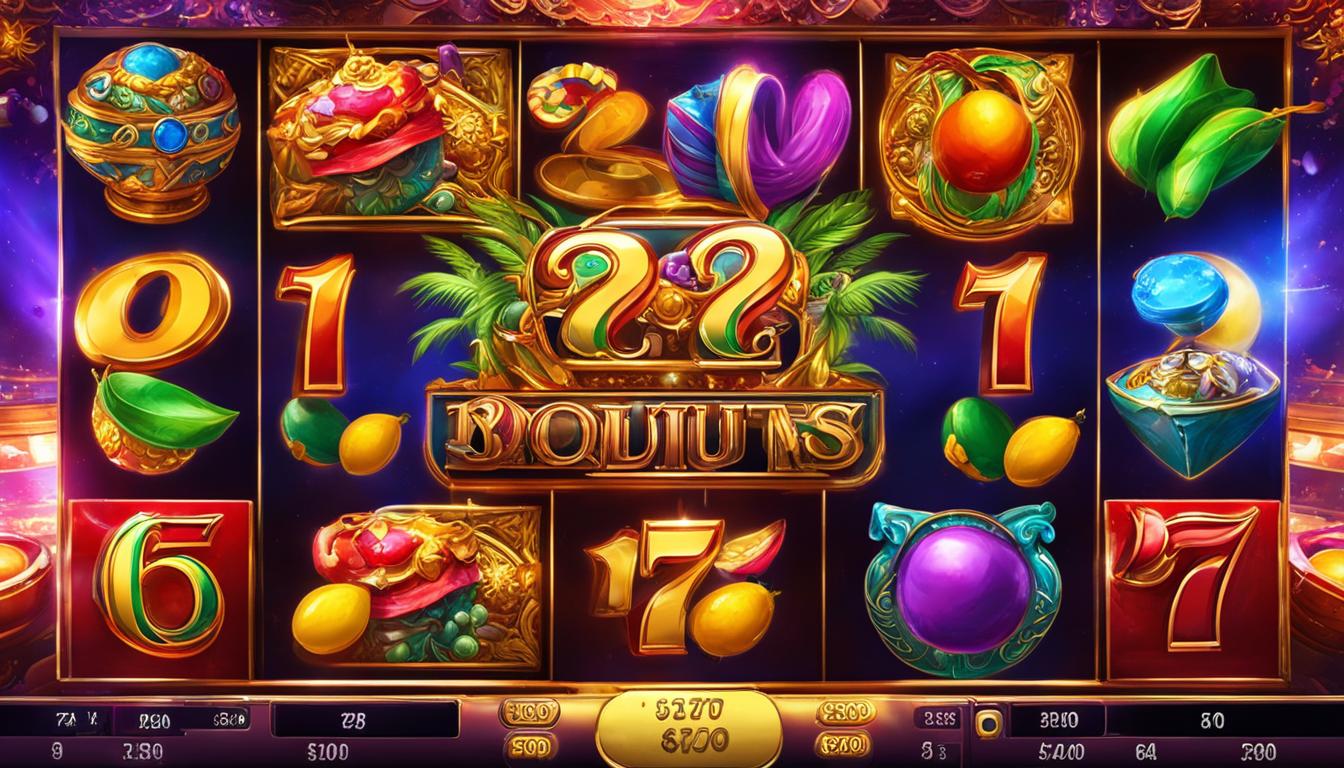Players seeking online poker games with high RTP (Return to Player) rates often focus on platforms that offer better odds and fairer chances of winning. RTP measures the percentage of wagered money that is paid back to players over time, making it a crucial factor for those who want to maximize their potential returns. Choosing poker sites with a high RTP ensures that players get a more favorable edge in their online gaming experience.
Several reputable online poker platforms now emphasize transparent RTP rates alongside attractive bonuses and professional customer support. These features combined create an environment where players can enjoy the game with increased confidence in the fairness and payout frequency.
Understanding RTP and knowing where to find the best poker games with higher rates can help players make informed decisions. This knowledge directly impacts their gameplay strategy and overall satisfaction with the game.
What Is Online Poker With High RTP?
Online poker with high RTP offers players a better return on their wagers compared to standard versions. The concept of RTP influences how much money players can expect to win back over time. Understanding the mechanics behind RTP, its impact on winnings, and how high-RTP games differ from others is important for informed gameplay.
Definition of RTP in Online Poker
RTP stands for Return to Player, which is the percentage of total bets a poker game is expected to return to players over a long period. For example, a poker game with an RTP of 98% means that, on average, players receive 98 units back for every 100 units wagered.
The RTP is a theoretical figure based on millions of hands played. It does not guarantee short-term results but shows the expected payout over time. Online poker RTP is influenced by game rules, bet sizes, and player strategy.
How RTP Impacts Player Winnings
RTP directly affects potential profitability. Higher RTP means less house edge and a greater chance for players to retain more of their bets. This can lead to longer playing sessions and increased opportunities to win.
However, RTP is a long-term average. Short-term results can vary widely due to the element of chance in poker. Skilled players who use optimal strategies can influence RTP outcomes more favorably.
Key Differences Between High and Standard RTP Games
High RTP poker games typically feature rules or formats that reduce the house edge. Examples include variants with fewer decks, better payout structures, or those allowing more player decisions affecting the outcome.
Standard RTP games might offer lower return percentages due to less favorable rules or higher commissions. Players should compare RTP values before choosing where to play.
| Feature | High RTP Games | Standard RTP Games |
|---|---|---|
| RTP Percentage | Typically 97%+ | Often 92%-96% |
| House Edge | Lower | Higher |
| Game Variants | Skill-based, fewer decks | Standard rules |
| Player Control Impact | Higher | Moderate |
Benefits of Playing Online Poker With High RTP
Choosing online poker games with a high Return to Player (RTP) directly impacts both the chances of winning and the overall gaming experience. Players benefit from better payout rates and more satisfying engagement, especially when optimal strategies are applied.
Increased Winning Potential
High RTP poker games return a larger percentage of wagered money to players over time. For example, a game with a 97% RTP theoretically returns $97 for every $100 wagered. This reduces the house edge, improving the player’s long-term winning potential.
Games with RTP above 95% are preferred by skilled players because they offer more frequent returns and better payouts for strong hands. The precise paytable and game variant also influence RTP. Selecting a game with favorable payout structures, such as higher rewards for rarer hands, helps maximize earnings.
Consistent use of optimal strategy alongside a high RTP game further enhances winning chances. Players who understand hand rankings and betting tactics can close the gap between theoretical RTP and actual results.
Enhanced Player Experience
High RTP games create a more enjoyable and less frustrating experience. Players face fewer extended losing streaks, which can improve concentration and decision-making during play sessions.
The perception of fair play increases confidence. Knowing a game returns a significant portion of wagers reduces the psychological impact of losses and encourages longer playtime.
Moreover, high RTP poker games are often better balanced, with clear rules and transparent paytables. This clarity supports learning and strategic development, making the game more accessible and rewarding for both beginners and experienced players.
In sum, high RTP contributes not only to potential financial benefits but also to a smoother, more engaging poker experience.
How to Identify High RTP Poker Platforms
Choosing a poker platform with a high Return to Player (RTP) percentage requires careful examination of several specific factors. These include the statistical performance of game providers, regulatory licensing and fairness assurances, and genuine feedback from users. Focusing on these aspects helps ensure better payout potential and a safer playing environment.
Reviewing Game Provider Statistics
A key indicator of a poker platform’s RTP is the historical data published by its game providers. Reputable providers openly share RTP percentages based on extensive gameplay results. Platforms featuring providers with RTP figures exceeding 95% typically offer better chances for players over time.
It is important to verify that the platform uses the official versions of games as some casinos may run altered versions with reduced RTP. Official provider reports or independent testing lab results, such as those from eCOGRA or iTech Labs, provide reliable RTP data.
Players should also compare RTP rates across different poker variations offered by the platform, since not all poker formats have the same RTP risks and rewards.
Evaluating Licensing and Fairness
Regulatory licensing is essential for confirming the fairness and transparency of poker platforms. Authorities such as the Malta Gaming Authority or the UK Gambling Commission enforce strict RTP standards. A valid license signals compliance with these standards and reduces the risk of manipulated or unfair games.
Fairness is further assured through independent audits by third parties. Certifications displayed on the platform’s website attest to the integrity of their random number generators (RNGs) and payout percentages.
Platforms without clear licensing or audit information should be approached cautiously, as lack of oversight increases the likelihood of RTP discrepancies or unethical practices.
Reading User Feedback and Ratings
User reviews and ratings provide practical insight into the actual RTP experiences of players on a given platform. Consistently positive feedback, specifically mentioning fair payouts and expected winning frequencies, suggests reliable RTP delivery.
It is advisable to look beyond the overall rating by examining comments regarding withdrawal speed, payout consistency, and customer support responsiveness, as these affect the player’s ability to benefit fully from the platform’s RTP.
Forums, dedicated review sites, and social media groups specializing in online poker can supplement official data, highlighting platforms that maintain or fail to uphold advertised RTP standards.
Popular Online Poker Games With High RTP
Certain poker variations consistently offer higher RTP rates, making them attractive to players focused on maximizing returns. These games differ in rules and strategy but share a reputation for favorable payout percentages.
Texas Hold’em Variants
Texas Hold’em remains the most popular poker game worldwide and has several online variants with solid RTP rates. Classic Texas Hold’em offers an RTP close to 96%, influenced by its blend of skill and chance. Variants like Turbo and Fast-fold Hold’em slightly adjust gameplay speed without significantly impacting RTP.
Players benefit from the extensive strategic depth in Texas Hold’em, allowing experienced players to improve their edge. The game’s widespread availability ensures consistent competition and well-established rules, helping maintain predictable RTP percentages.
Omaha Poker Options
Omaha poker is another popular variant with competitive RTP values, typically around 96% depending on the specific version. Omaha Hi and Omaha Hi-Lo are the two main styles, with Hi-Lo offering split pots and a slightly more complex strategy.
The increased number of hole cards in Omaha demands sharper hand-reading skills, influencing the outcomes more than chance alone. This skill component can potentially boost player returns by minimizing losses through informed decisions within the game’s structure.
Other Top-Rated High RTP Poker Games
Besides Texas Hold’em and Omaha, video poker variants like Deuces Wild are known for exceptionally high RTPs, sometimes reaching 100%. These games combine traditional poker rules with slot machine speed, allowing rapid hands and consistent payouts.
Other poker options, including 3-card poker, also feature high RTP rates often exceeding 96%. Their shorter rounds and simpler hand rankings attract players seeking quick, transparent results with reliable return percentages. These variations often serve as ideal alternatives for players prioritizing consistent bankroll growth.
Strategies for Maximizing RTP in Online Poker
Maximizing RTP in online poker requires a mix of choosing the right games, managing funds wisely, and continuously improving skill levels. Each of these areas directly influences long-term returns and consistency at the tables.
Game Selection Tips
Choosing poker games with higher RTP means prioritizing formats and stakes that offer better expected value. Players should focus on tables with looser opponents and higher “Players per Flop” percentages, ideally above 20-30%, which signal less selective, inexperienced players. This increases profitable opportunities.
Games with lower rake and smaller field sizes often yield higher RTP due to reduced costs and less competition. Additionally, selecting formats like No-Limit Hold’em over more complex games can improve RTP since they allow easier application of solid strategies.
Evaluating the rake structure and bonus offerings also helps. Some sites provide rakebacks or other incentives which can effectively increase RTP when playing specific games.
Bankroll Management Techniques
Proper bankroll management is essential to protect a player’s capital and sustain a positive RTP over time. It involves setting strict limits on buy-ins relative to total bankroll size. For example, a common rule is to never risk more than 1-2% of the bankroll on a single buy-in.
Avoiding tilt and emotional decisions is part of this. Sticking to the planned buy-in limits and stopping play after losses prevent chasing, which reduces expected returns.
Tracking wins, losses, and session duration enables better bankroll analysis, helping players adjust stakes or game types if needed. Consistency in bankroll control allows recovery from variance without risking long-term profits.
Player Skill Development
Improving player skill boosts decision-making, directly impacting expected return. This includes mastering concepts such as position, bet sizing, and reading opponents. Advanced skills like bluffing strategically and recognizing patterns increase profitability.
Utilizing tools such as hand range calculators and studying Game Theory Optimal (GTO) strategies can refine play and minimize mistakes. Engaging in regular review and analysis of hand histories reinforces learning.
Bankroll management is an important skill here as well, tied closely to emotional discipline. Together, these competencies enhance the ability to exploit weaker players and maximize RTP in online poker sessions.
Risks and Responsible Gaming
Playing high RTP online poker involves more than just picking games with favorable payout percentages. Understanding game volatility and managing expectations are crucial to maintaining a balanced approach and preventing problematic gambling behavior.
Understanding Volatility Despite High RTP
High RTP indicates the theoretical return over a long period but does not eliminate short-term swings in winnings and losses. Volatility refers to the frequency and size of these fluctuations. Even poker games with RTP above 95% can experience high volatility, meaning players may face large losses before recovering.
Players should recognize that variance can impact their bankroll significantly. Games with low volatility yield smaller but more frequent wins, while high volatility games offer bigger payouts less often. Proper bankroll management must consider volatility alongside RTP to avoid depleting funds during losing streaks.
Setting Realistic Expectations
RTP is a long-term statistical average, not an assurance of immediate profits. Players should be aware poker outcomes rely heavily on chance and not assume high RTP guarantees consistent wins. Understanding this helps prevent chasing losses and impulsive decisions.
Setting win and loss limits before playing can support responsible gaming. Knowing when to stop protects against emotional betting. A disciplined approach ensures that gaming remains entertainment, not a financial risk.
Conclusion
Choosing poker games with a high RTP (Return to Player) is a strategic decision for players seeking to maximize their long-term returns. A higher RTP percentage means the game is designed to return more money to players over time, reducing the house edge.
Players should remember that RTP is a statistical average calculated over a long period. It does not guarantee short-term wins but indicates better odds compared to games with lower RTP.
Understanding RTP helps players make informed choices when selecting online poker platforms. It encourages focusing on games with RTP typically above 95% to enhance winning potential.
In addition to RTP, factors like game volatility and player strategy influence results. Combining knowledge of RTP with careful gameplay can improve outcomes without relying solely on luck.
| Key Points | Explanation |
|---|---|
| High RTP | Increases chances of getting better returns in the long run |
| Statistical Nature | RTP is an average over many games; short-term results vary |
| Strategic Importance | Selecting high RTP games can be part of a winning strategy |
| Complementary Factors | Volatility and skill impact overall success alongside RTP |
This knowledge gives players a clearer perspective on the role of RTP in poker online, supporting smarter game selection and better bankroll management.



